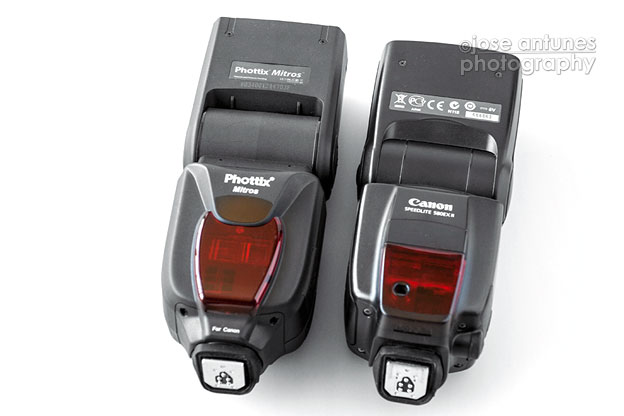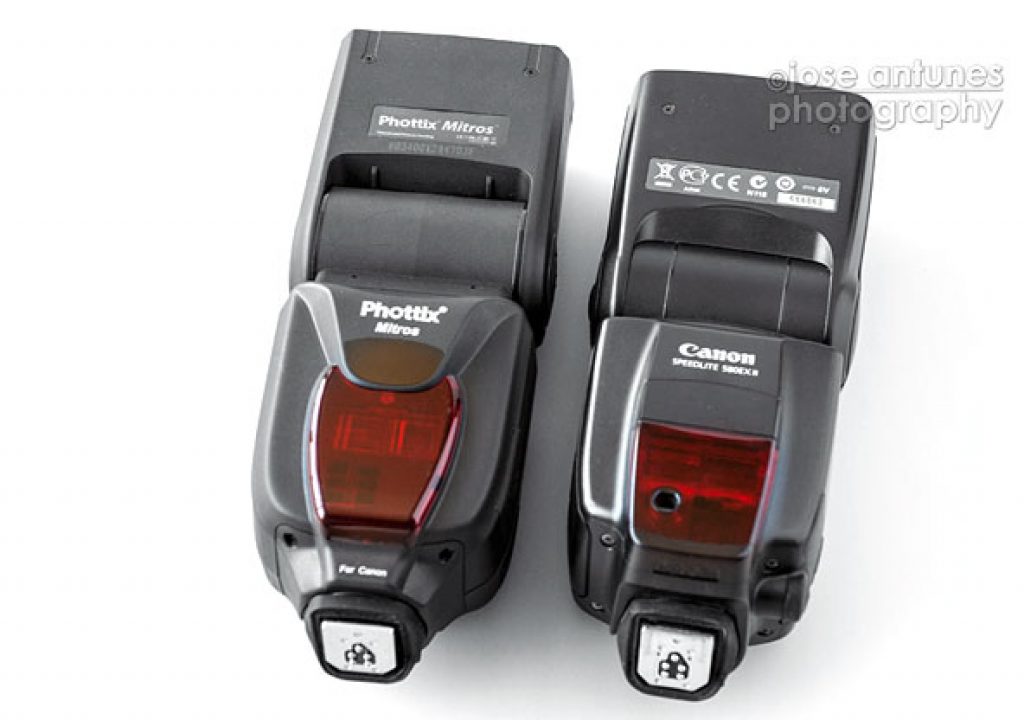
Buying a new flash is easy once you know what your needs are. For me, although I work a lot in manual settings (on the flash and camera), it has to have TTL, because I use TTL for action shots and I also need the High Speed Sync. It’s not just that: I am lazy, so I like to control everything from the camera. And I can do it, because I am the happy owner of a Phottix Odin radio trigger that lets me control flashes directly from the TCU (or Transmitter and Control Unit) sitting on my camera’s hot shoe. From zooming heads to flash ratios, everything is under my fingertips. And I never have to think about line of sight limitations.
Now, I am a Canon user, so I’ve Speedlites. Up until now I did not feel the need to look away from what Canon offers, but we’ve come to a crossroad in terms of Canon flashes: they created their new flashes with radio integrated, the 600 series, but after trying it I decided it was too much trouble and money and not an interesting option for me. You see, I do not intend to control 5 groups of flashes and everything else, the three usual groups are more than enough, and that’s what I do with the Phottix Odin system. In fact, although I’ve multiple receivers, I usually work with a single flash and reflectors, although I can use more for some work.
So, for me, it did not make sense to spend money on a Speedlite 600EX-RT, as I already have a reliable radio trigger system that I know inside out and is working perfectly… besides letting me work with flashes as old as a Speedlite 430EZ (with some limitations, obviously) or fully explore an old 420EX beyond what you can do with camera control. And it also does not make sense to buy the 600EX without radio, as the difference in price is minimal.
When recently my 430EZ fell and lost the front Fresnel lens (it’s glued in place but will not last much longer) I decided I wanted to have a new flash… and I wanted very much to look at the Phottix Mitros, which is very similar to the Speedlite 580 EX II in terms of specifications, but has things, like a Custom function menu that is user friendly and in plain English instead of the esoteric code Canon used, which can be important. I know these days you can control CFn‘s from the camera menu, but sometimes it is good to have a flash that really speaks your language. The Mitros does.
I’ve had the chance to test the Mitros side by side with a 580 EX II and although they share the same guide number I would say the coverage from the Mitros is wider. Look at the published image and take it with a grain of salt, this is not a test lab shot, but I did shoot a series of images and the results were consistent. Both flashes were loaded with the same type of batteries (Imedion 2400 mAh) charged just before the test. For normal working conditions, I did not feel any difference between the 580 EX II and the Mitros. It’s a tool. And it works!
The flash is slightly bigger than the 580 (it still can fit in my beltpack on the MindShift Gear Rotation 180 Pro, though, what is a blessing), has a battery compartment with an odd placement of the cells, an interface that is easy to understand even without glancing at the manual, and even beeps to confirm it is ready to shoot, something some photographers will love… and others hate. It can be deactivated from the menu, though…
The Phottix Mitros is compatible with Canon IR Wireless Triggering with Master and Slave mode and also offers an Optical Slave Sync Mode for those that need it. But contrary to what some may expect, it does not show any PC connection, preferring the more reliable 3.5mm Sync port. Two good things: it has an option for external battery pack, with a proprietary connection and an adapter to use Canon battery packs as well. And it has a USB that will let you upgrade the firmware, something that a 580 EX II can not do. Of course the idea of updating firmware was not common when Canon launched the 580, but it is a good sign to see it implemented in a flash that competes rather well with Canon Speedlites.
After two weeks trying the flash – more using it to work, in fact – I am fully convinced, and, in fact, now I know which path I’ll follow to upgrade my flashes. The Phottix Mitros offers me the reliability and specifications of the 580 EX II or, let’s say, the modern 600 EX (which is rather difficult to find on sale), for a little over the price of a Speedlite 430 EX II. In fact, the $349.99 price asked for the Phottix Mitros makes it an interesting option whichever way you look at it. Now you know! And this very day, after I wrote this article, I received information that Phottix launched the Mitros in Nikon version. So check your options, Nikonians!

